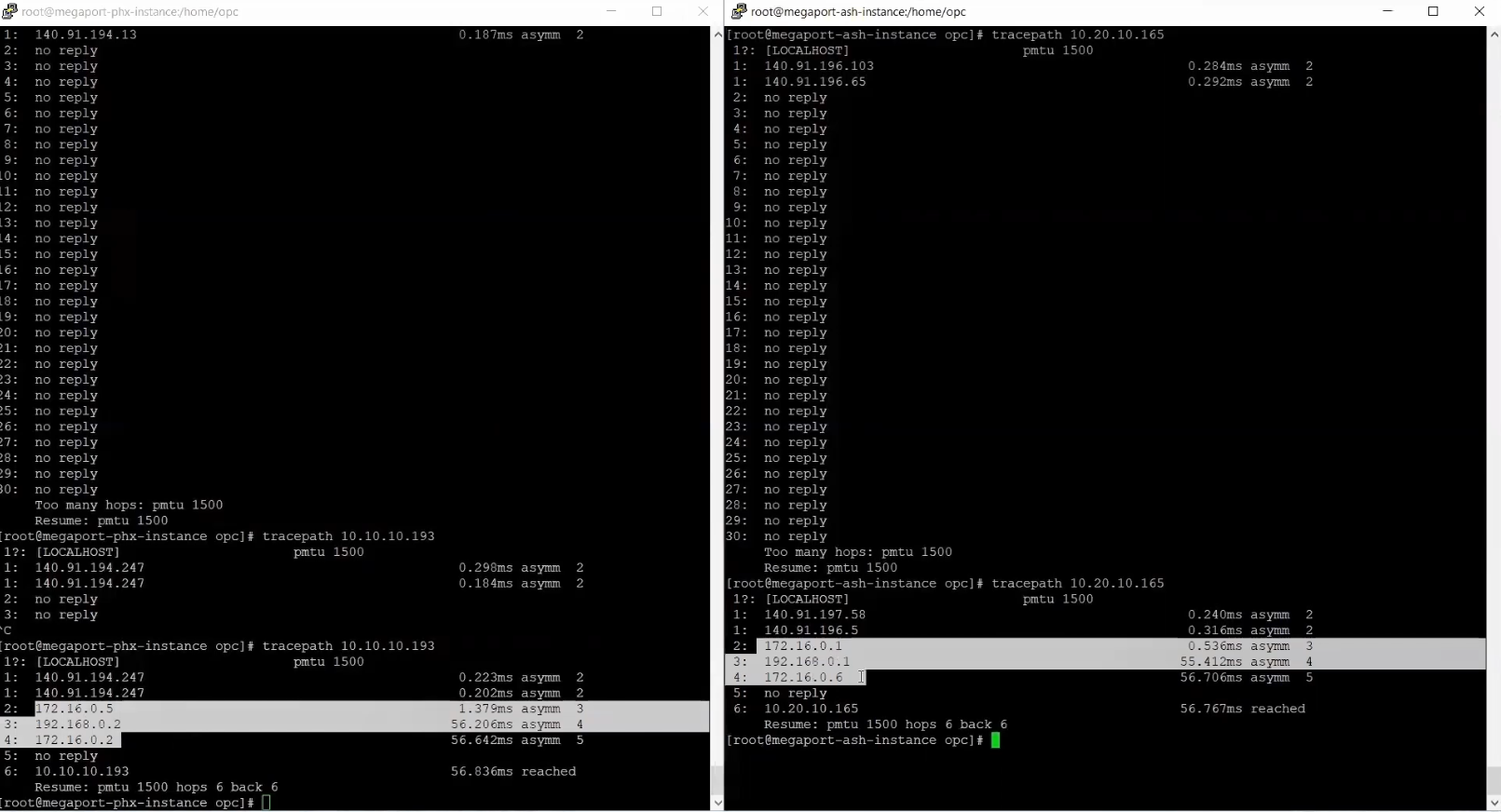Introduction
In this blog, I will write about how to configure the Megaport side to be able to connect two Oracle Cloud Infrastructure (OCI) Regions using Megaport Infrastructure. This solution can be used as a replacement for the OCI Remote Peering Connection (RPC) and has all the benefits of Megaport SLAs.
Please go here for the OCI side configuration, which is the first part of this blog series.
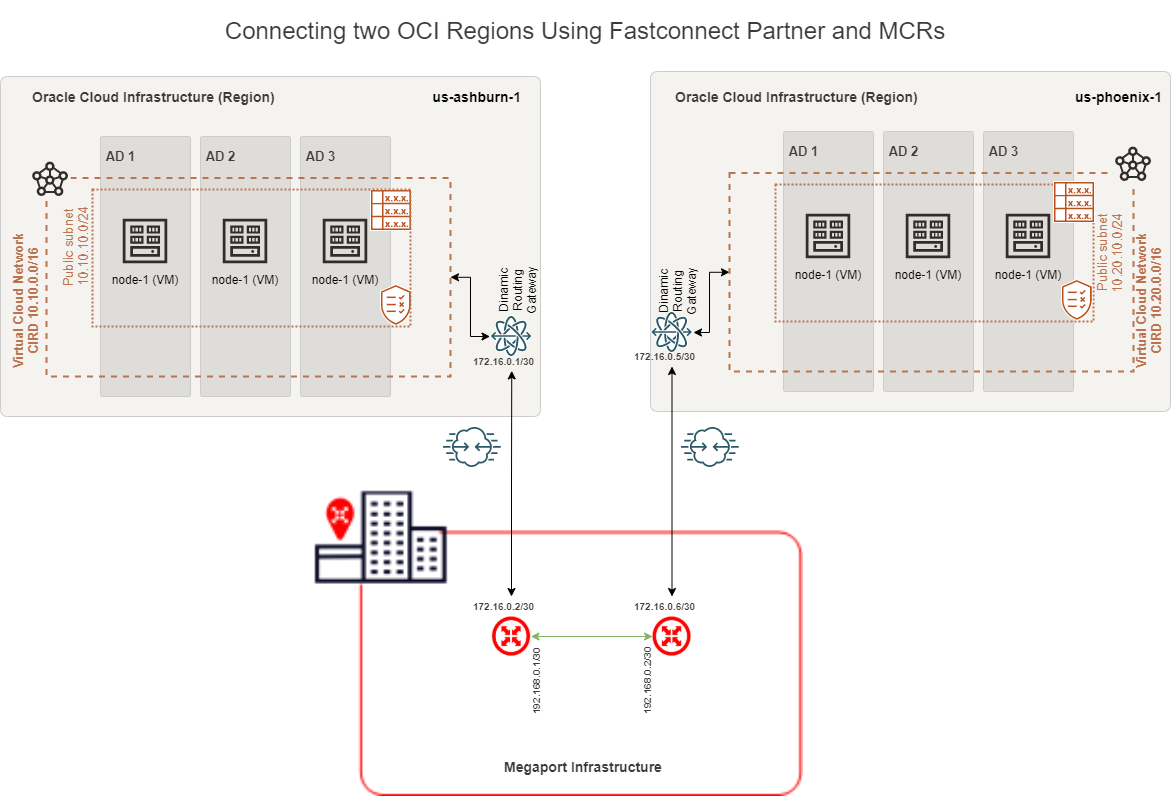
For this connectivity model, we will use 2 FastConnects using Megaport as a Partner, 2 Megaport MCRs, and the Megaport Infrastructure.
In this blog, we will use the following technologies:
– OCI Compute – for more information, please access official documentation at https://www.oracle.com/cloud/compute/
– Megaport as a Partner – for more information, please access official documentation at https://www.megaport.com/services/oracle-cloud-fastconnect/
– Megaport Cloud Router (MCR) Partner – for more information, please access official documentation at https://www.megaport.com/services/megaport-cloud-router/
–
Prerequisites
In this blog, we will cover how to provision the Megaport Infrastructure. To do this, we will need the following resources already provisioned and configured:
1. VCNs – in our case, we will have a VCN in Ashburn region with 10.10.0.0/16 CIDR and another VCN in Phoenix region with 10.20.0.0/16 CIDR with all routing and Security List / Network Security Groups to allow connectivity between Ashburn and Phoenix CIDR Blocks
2. 2 DRGs – in our case, one DRG in Ashburn and one DRG in Phoenix with VCN attachments and routing in place to allow traffic between Ashburn VCN and Phoenix VCN
3. 2 Compute VMs – in our case, one compute VM in Ashburn with IP 10.10.10.193 and one in Phoenix with IP 10.20.10.165
4. Access to the Megaport portal with the possibility to provision and Order required components.
5. Prepare and have in handy all the needed data to configure this solution. In our case, what I have prepared is:
# Ashburn VCN CIDR = 10.10.0.0/16
# Ashburn subnet = 10.10.10.0/24
# Ashburn Compute instance IP = 10.10.10.193
# Ashburn Fastconnect BGP subnet = 172.16.0.0/30
# Phoenix VCN CIDR = 10.20.0.0/16
# Phoenix subnet = 10.20.10.0/24
# Phoenix Compute instance IP = 10.20.10.165
# Phoenix Fastconnect BGP subnet = 172.16.0.4/30
# Megaport MCR’s Link subnet = 192.168.0.0/30
# Megaport BGP ASN = 133937
# Oracle BGP ASN = 31898
Solution Description
This solution is not focusing on redundancy, and the connectivity will be based on this network diagram:

This blog will focus on how we can configure the Megaport Infrastructure, which can be done by following the next steps:
a. Access the Megaport Portal at https://portal.megaport.com/. Log in with your credentials and go to Services Tab.
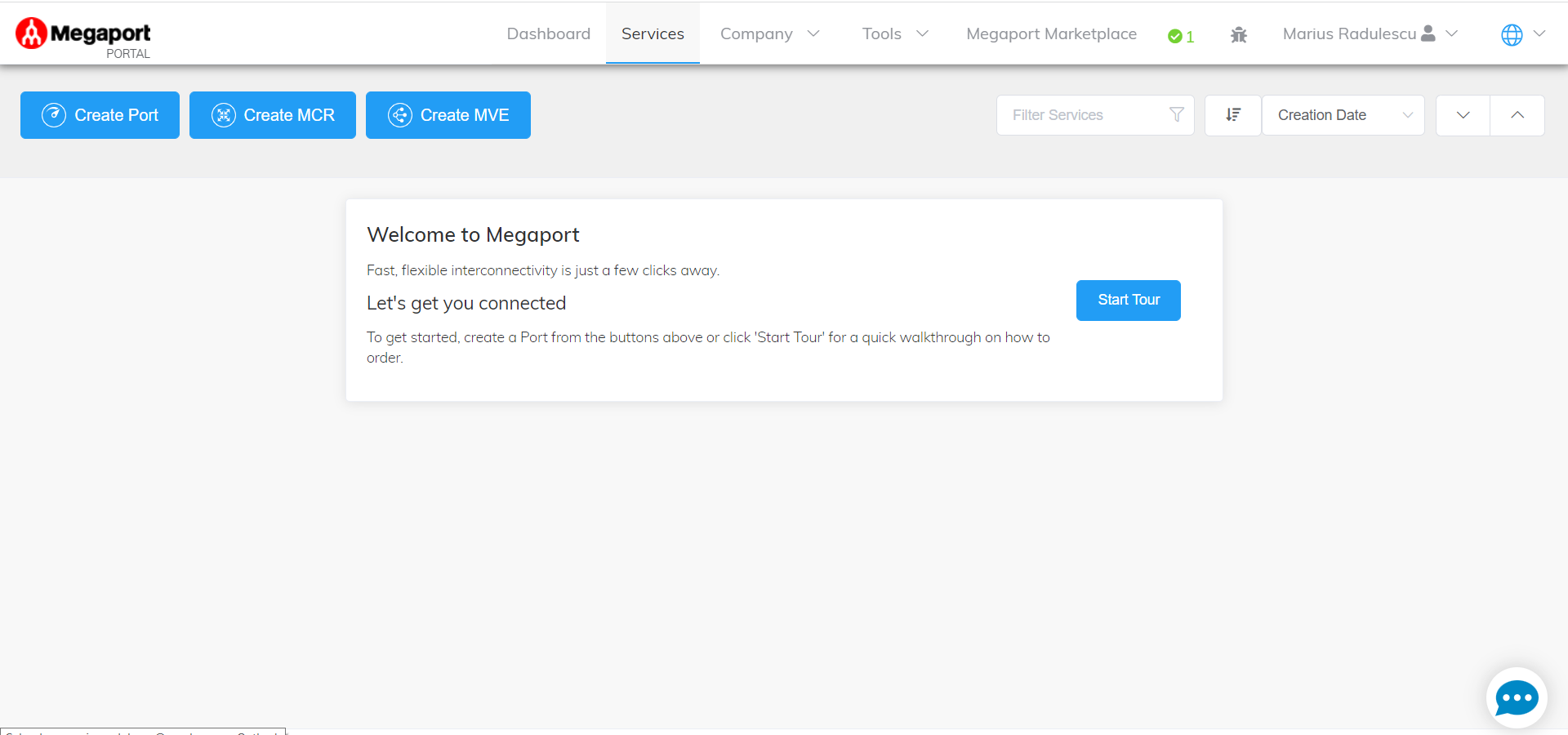
b. Click on Create MCR, search by country and city, and select MCR Location, in our case, will be Equinix DC4, and click next.
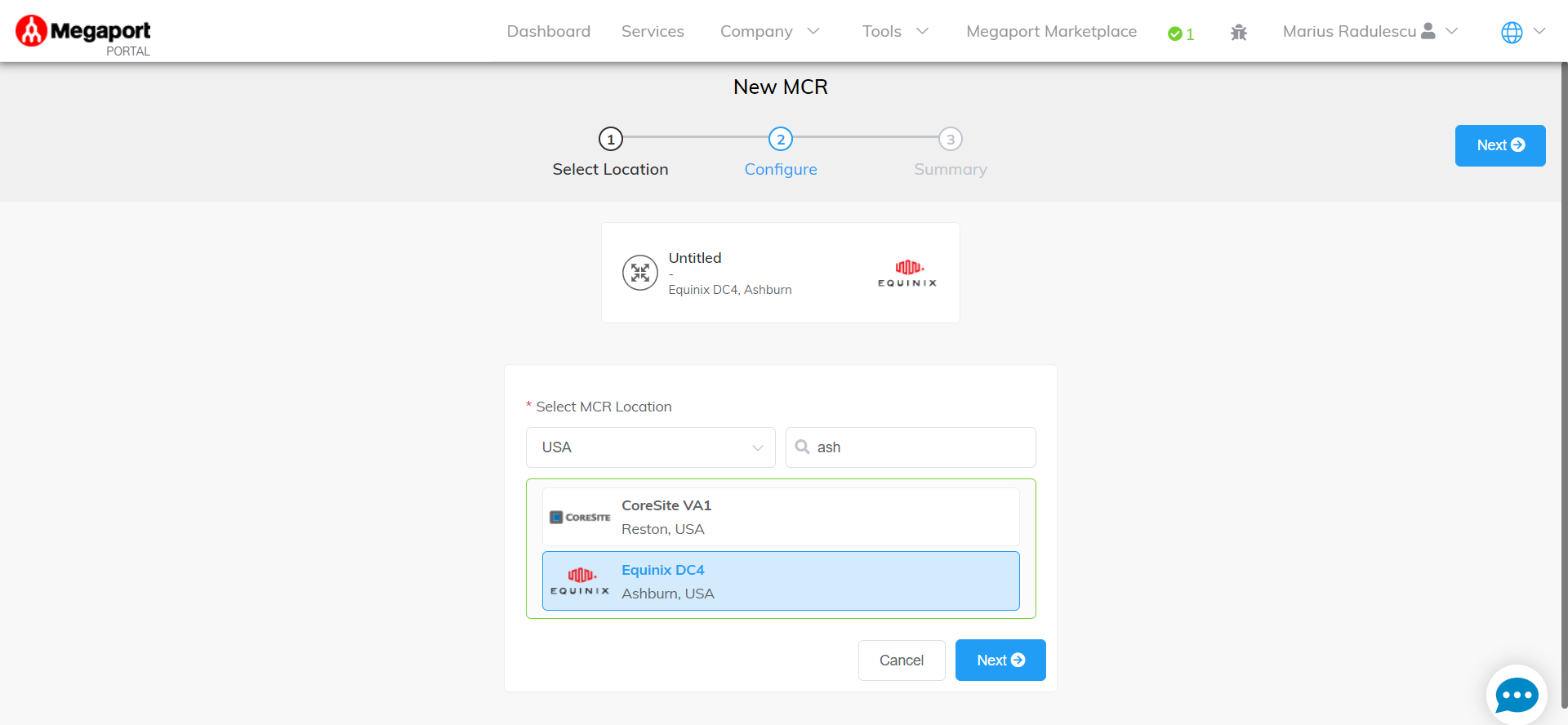
c. Now select a Rate Limit, create a Name for the MCR, select a Minimum term for the MCR, and click Next.
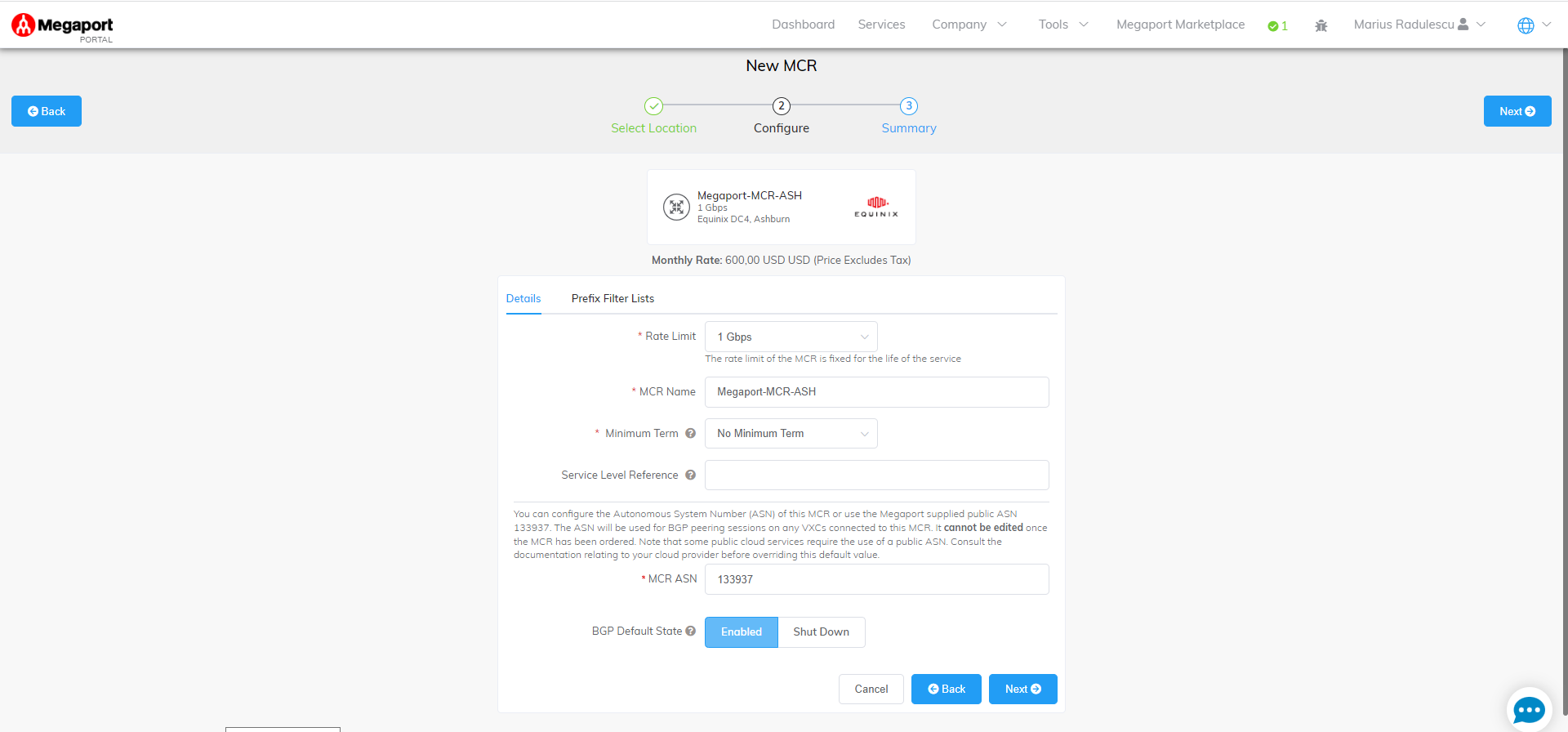
d. Verify Summary and click Add MCR.
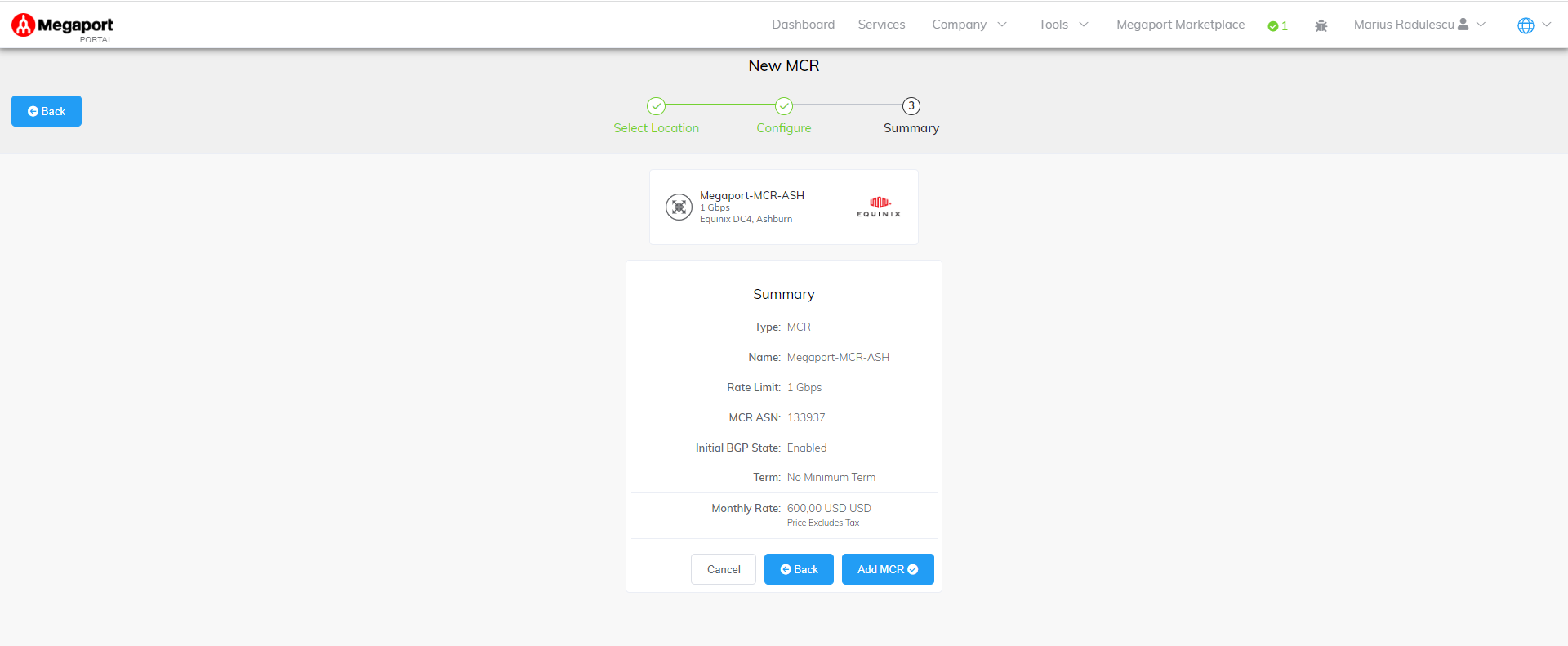
e. At this point, the New MCR will be added in the Services Tab and on the left panel for Ordering. We can move one to configure this MCR by creating the Connection to Oracle by clicking on Oracle Cloud Icon.
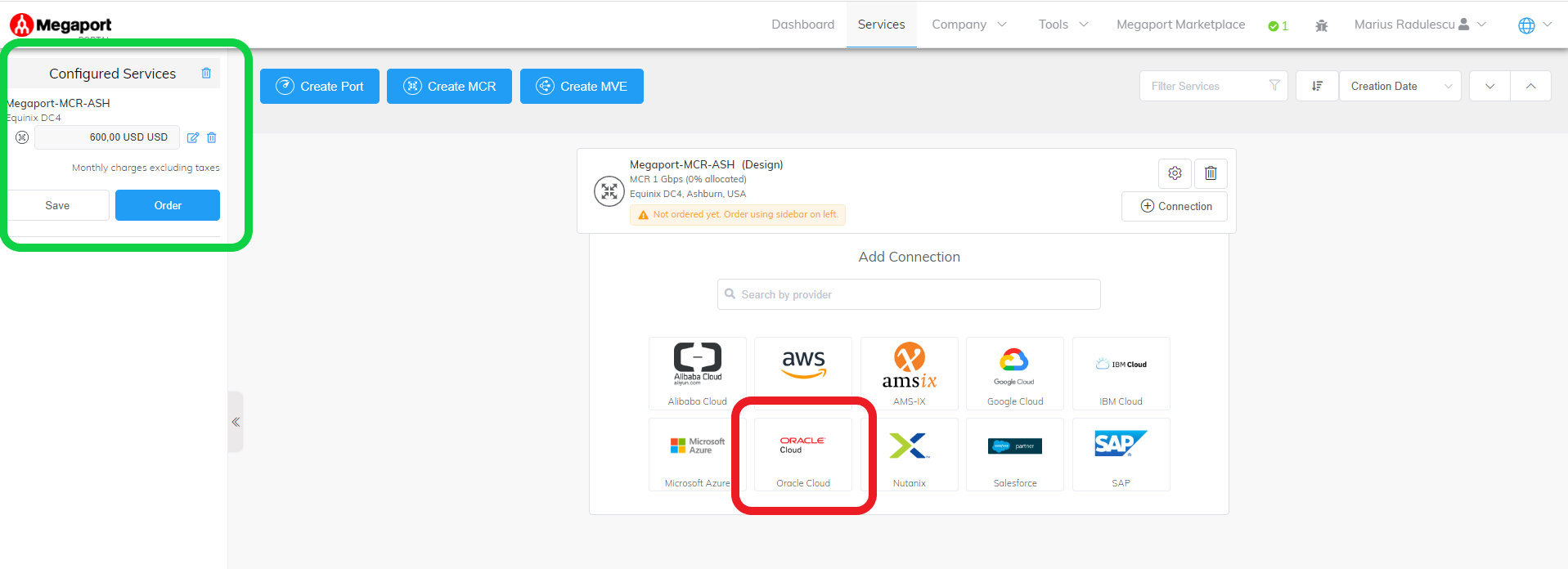
f. Now, we need to provide Oracle OCID for the Ashburn FastConnect. For an example of where can be found this OCID, see details in this blog, point (f. Add this OCID in the “Oracle Virtual Circuit ID” box, and once it is validated, we can select one of the available ports and hit Next.
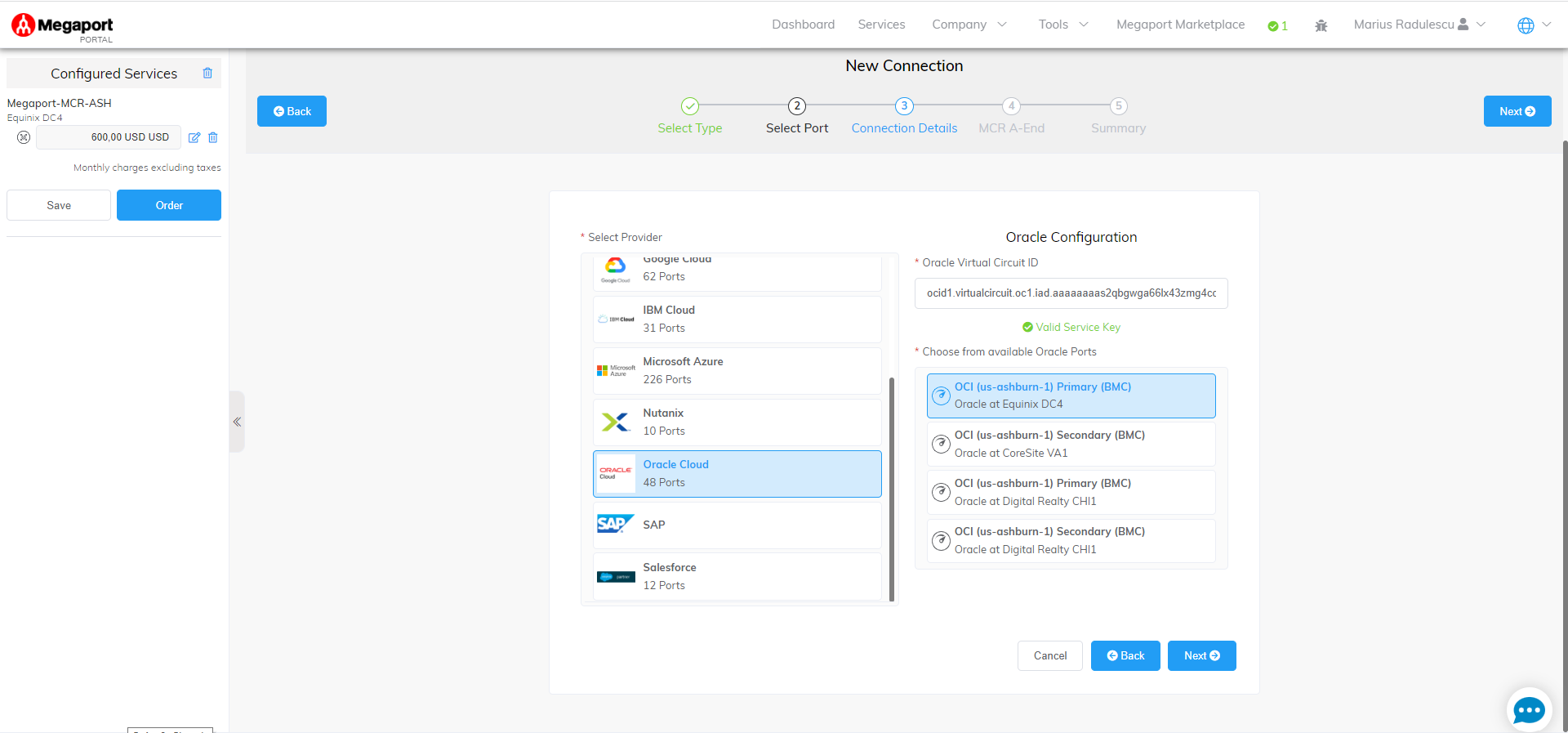
g. Give this connection a name and select a rate limit; in this case, I will add 500 Mbps because, in the end, each MCR will have two links, one to OCI and one to the other Region MCR, and click next.
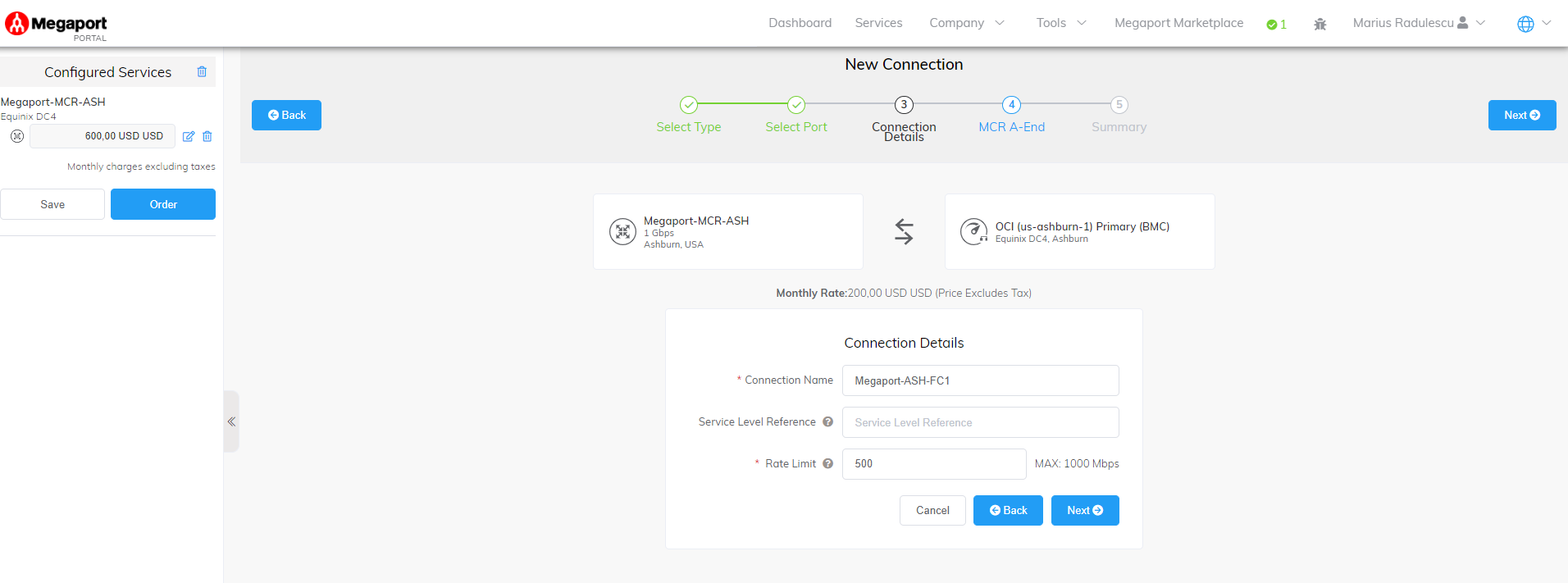
h. Configure the interface IP, which we have configured on OCI FastConnect as the Customer IP and click Add BGP Connection.

i. On the BGP page, configure the BGP connection by selecting the local IP, adding the Oracle IP, filling in the Oracle AS number in the peer ASN field, and clicking Add.
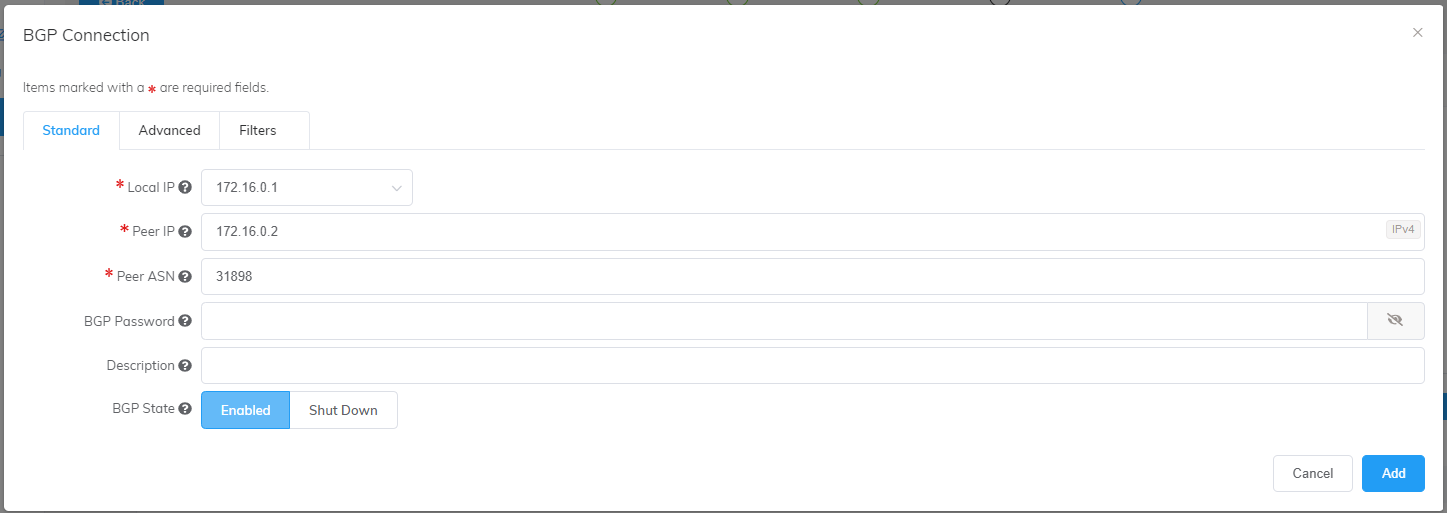
j. Now, the MCR Connection detail page should look like the image below. Click next.
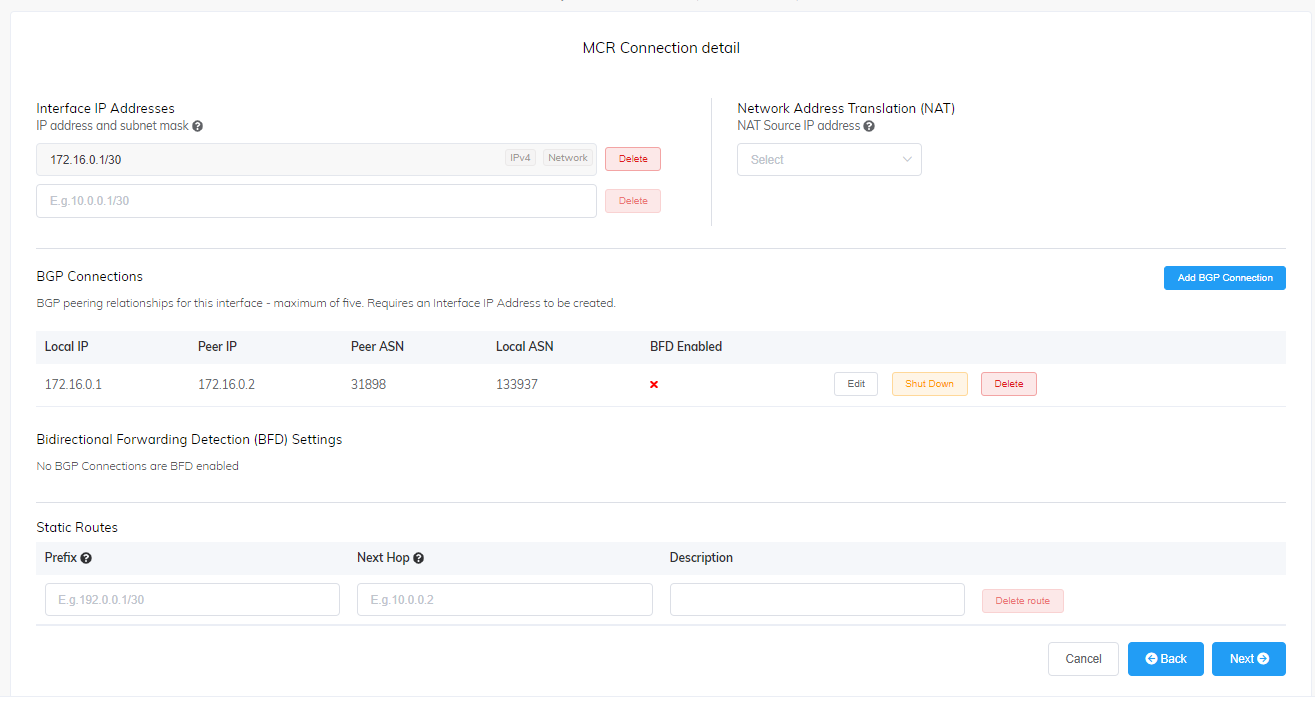
k. Verify the summary page looks ok and click Add VXC.
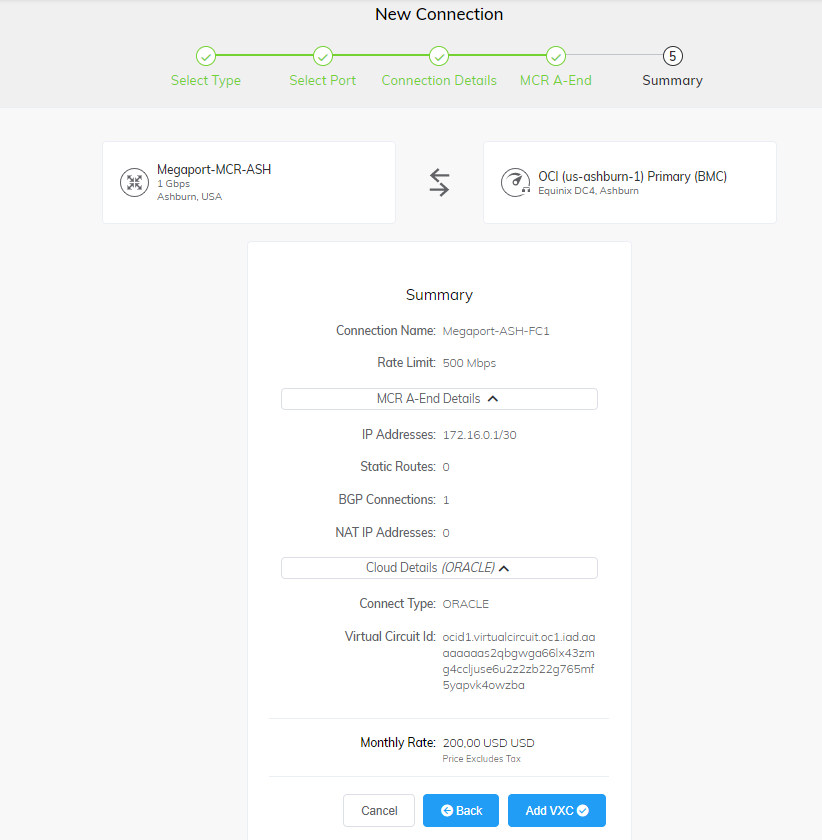
l. Now will create the MCR and OCI connection in the Phoenix region following the same steps we did in this section, points (b to (k.
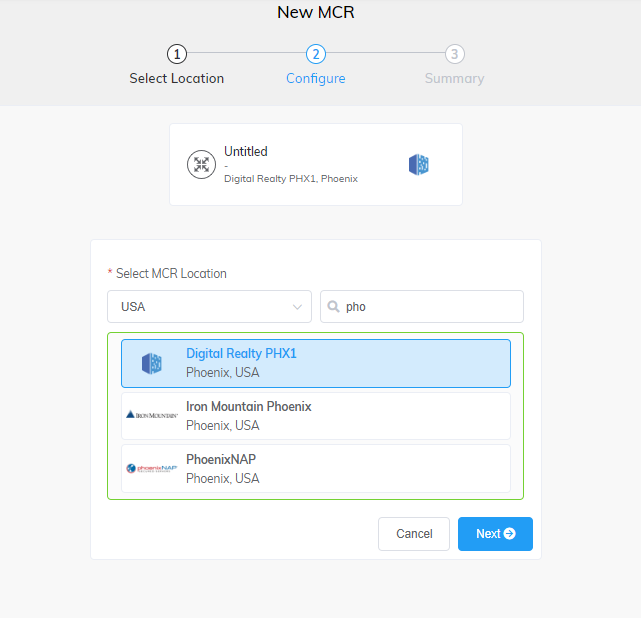
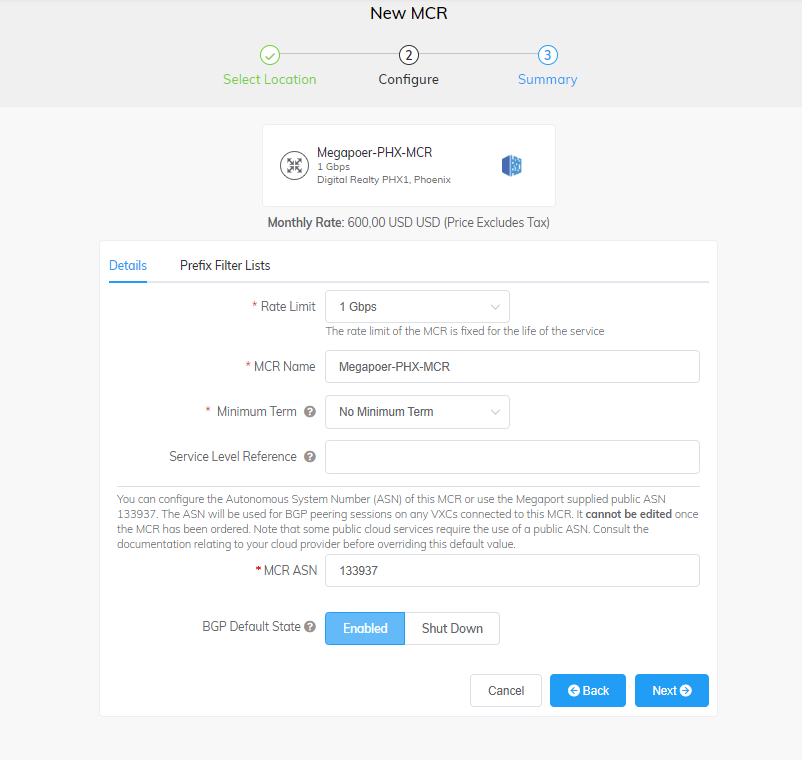
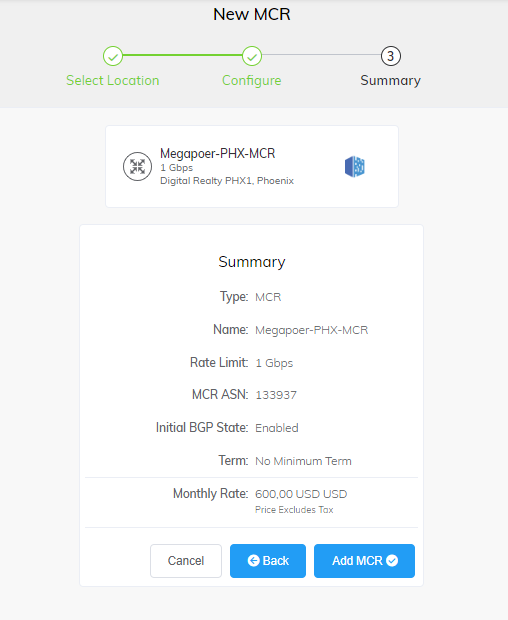
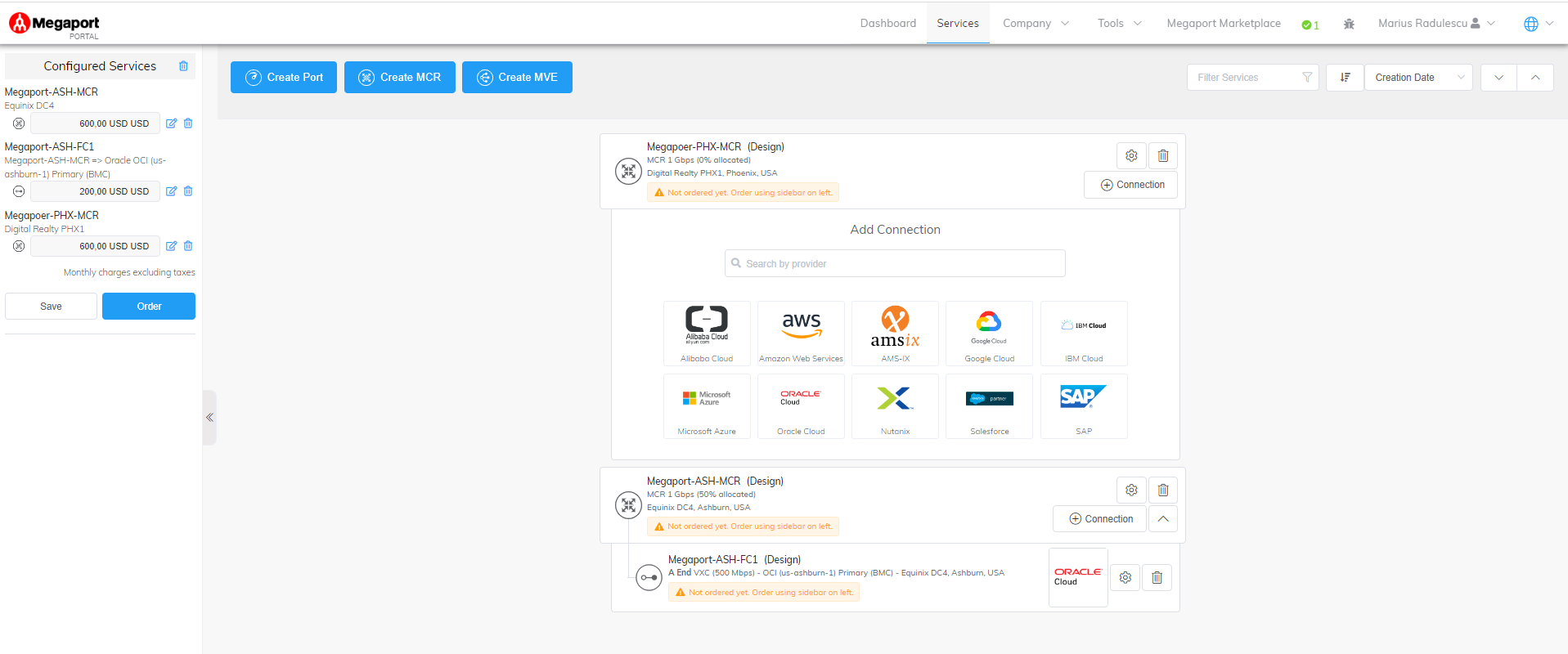
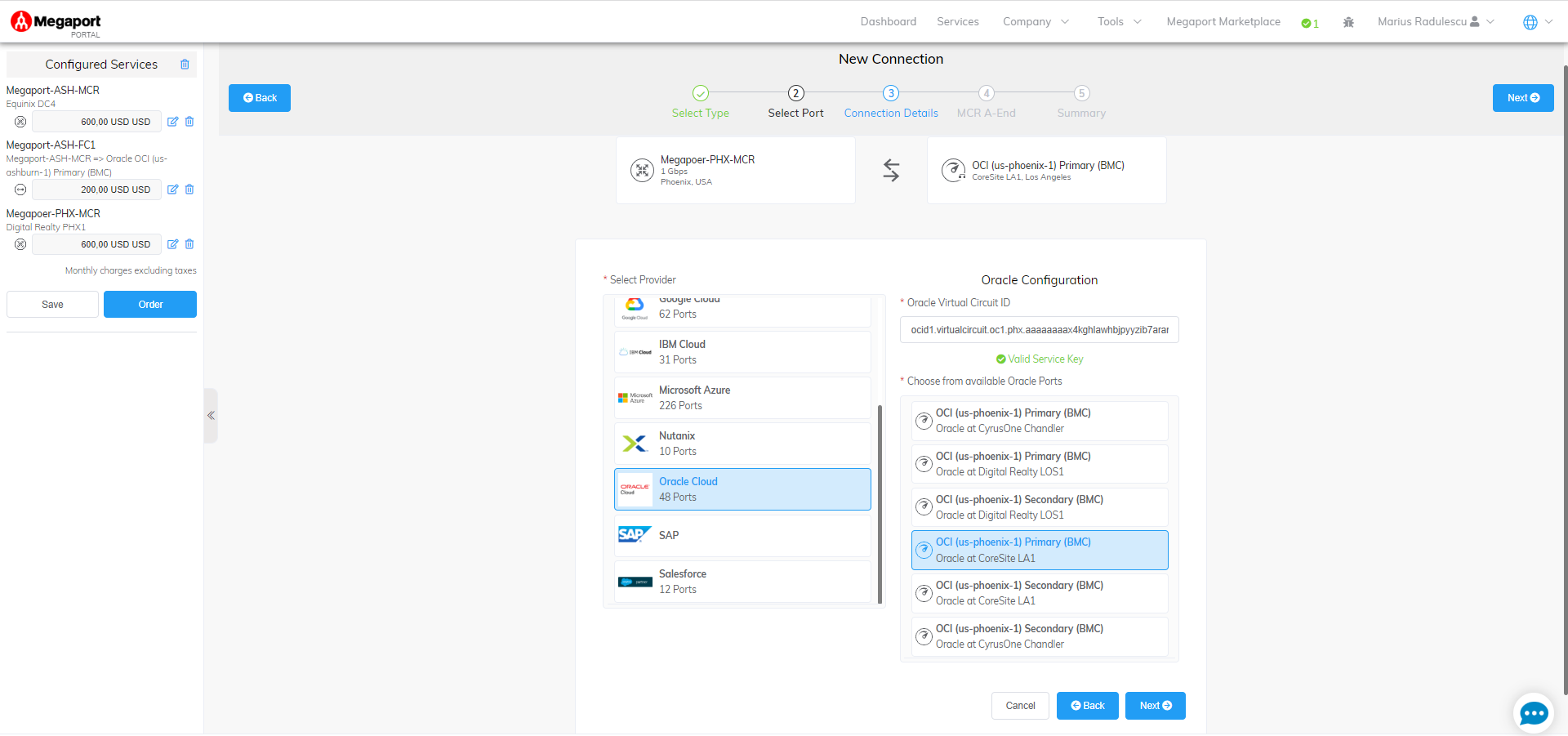

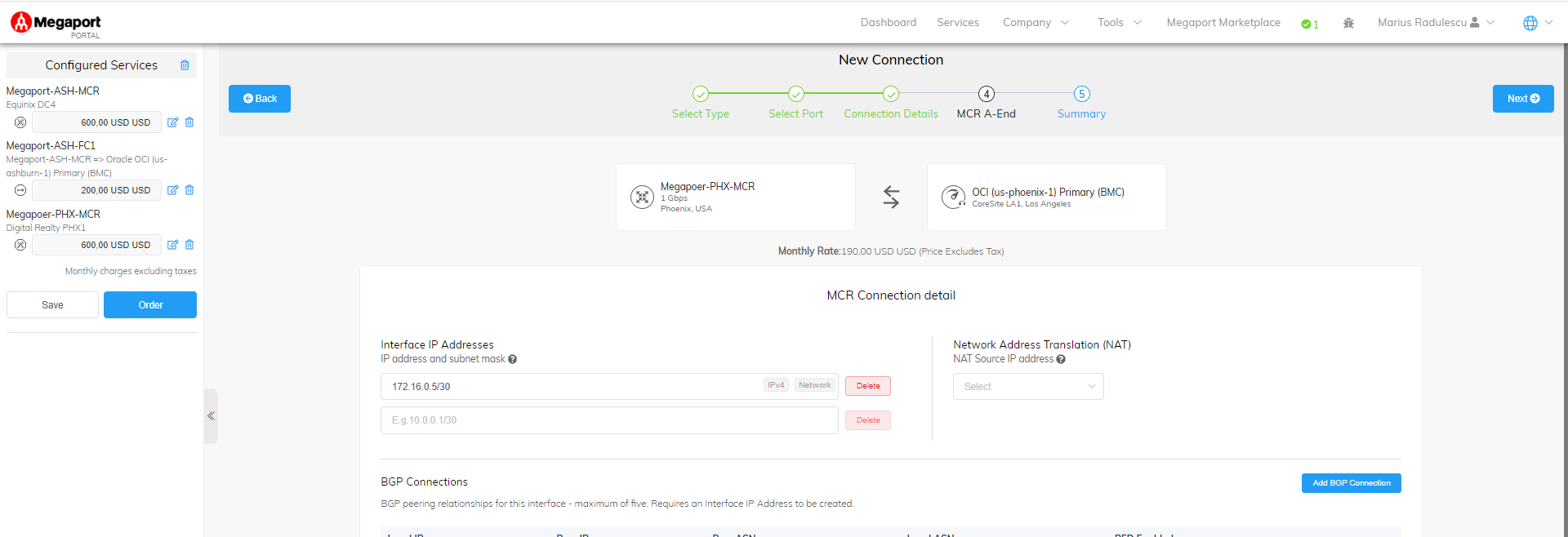

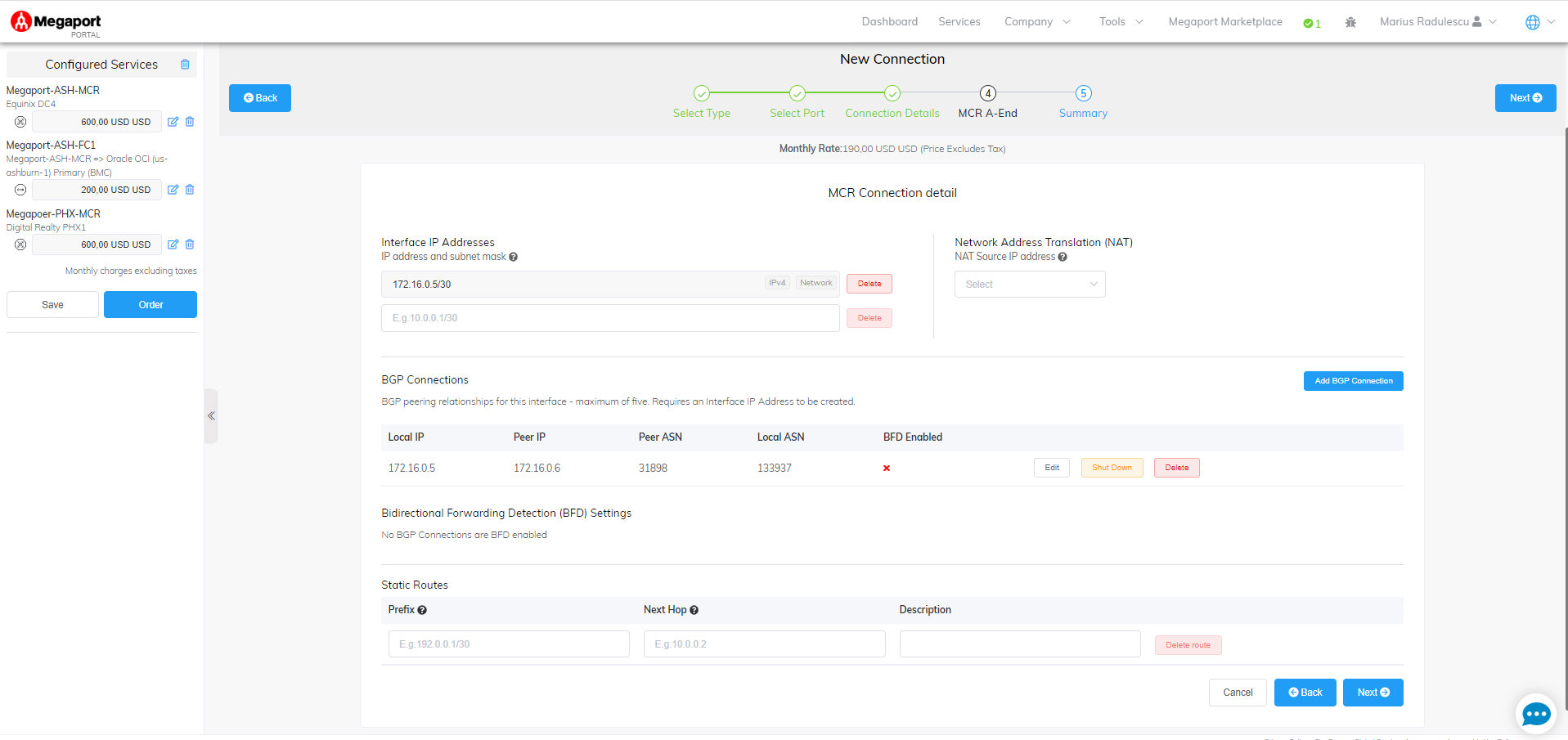
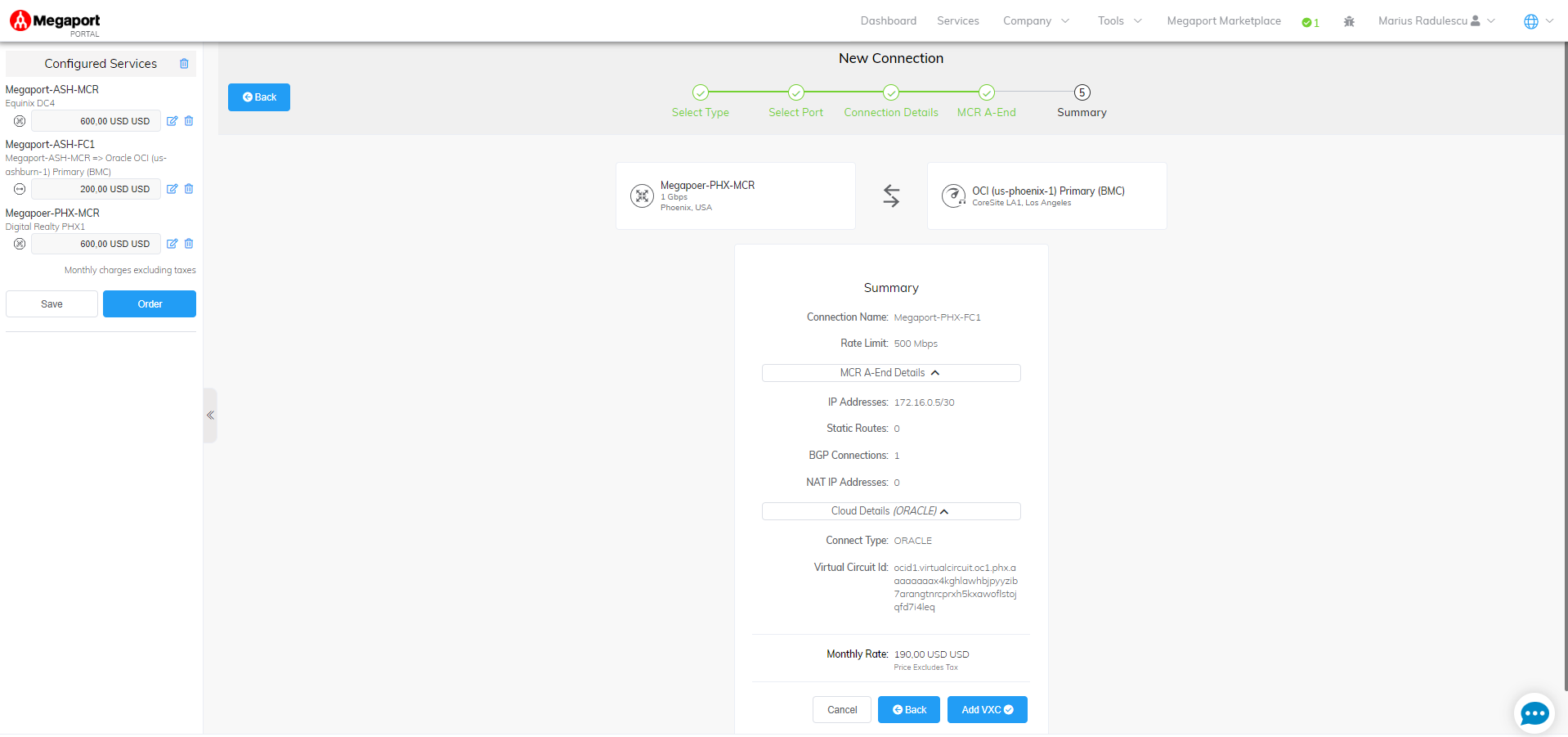
m. At this point, we should see on the Services Tab the following resources.

n. Now that we have 2 MCRs in both regions and are connected using OCI FastConnect, we can build the connectivity between the 2 MCRs by selecting “+ Connection” on one of the MCRs.

o. Select “Private VXC” and click next.
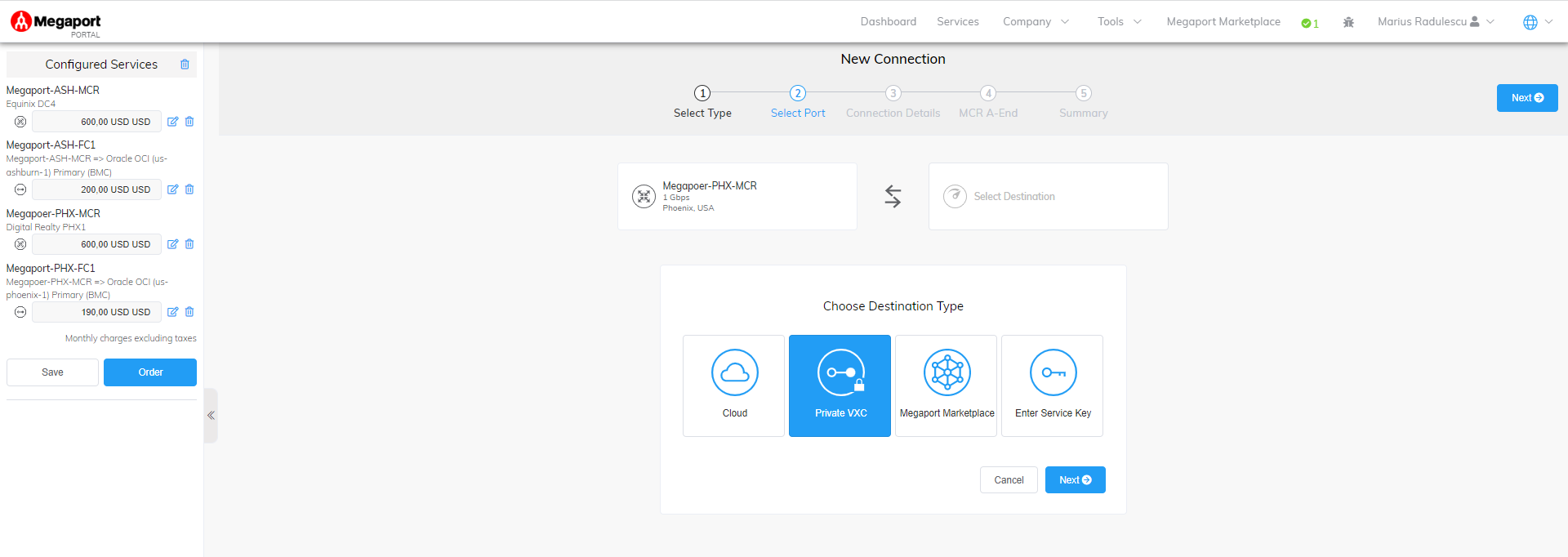
p. Select the destination port; this will be the other MCR we created earlier, and click next.

q. Give a connection name; in this case, I will identify this connection as a backbone connection, select a rate limit for this link and click next.

r. Provide Interface IP and create a static route to the other end as a next hop; in my case, because I am configuring the Phoenix side now, I will add Ashburn VCN CIDR block. Click next.
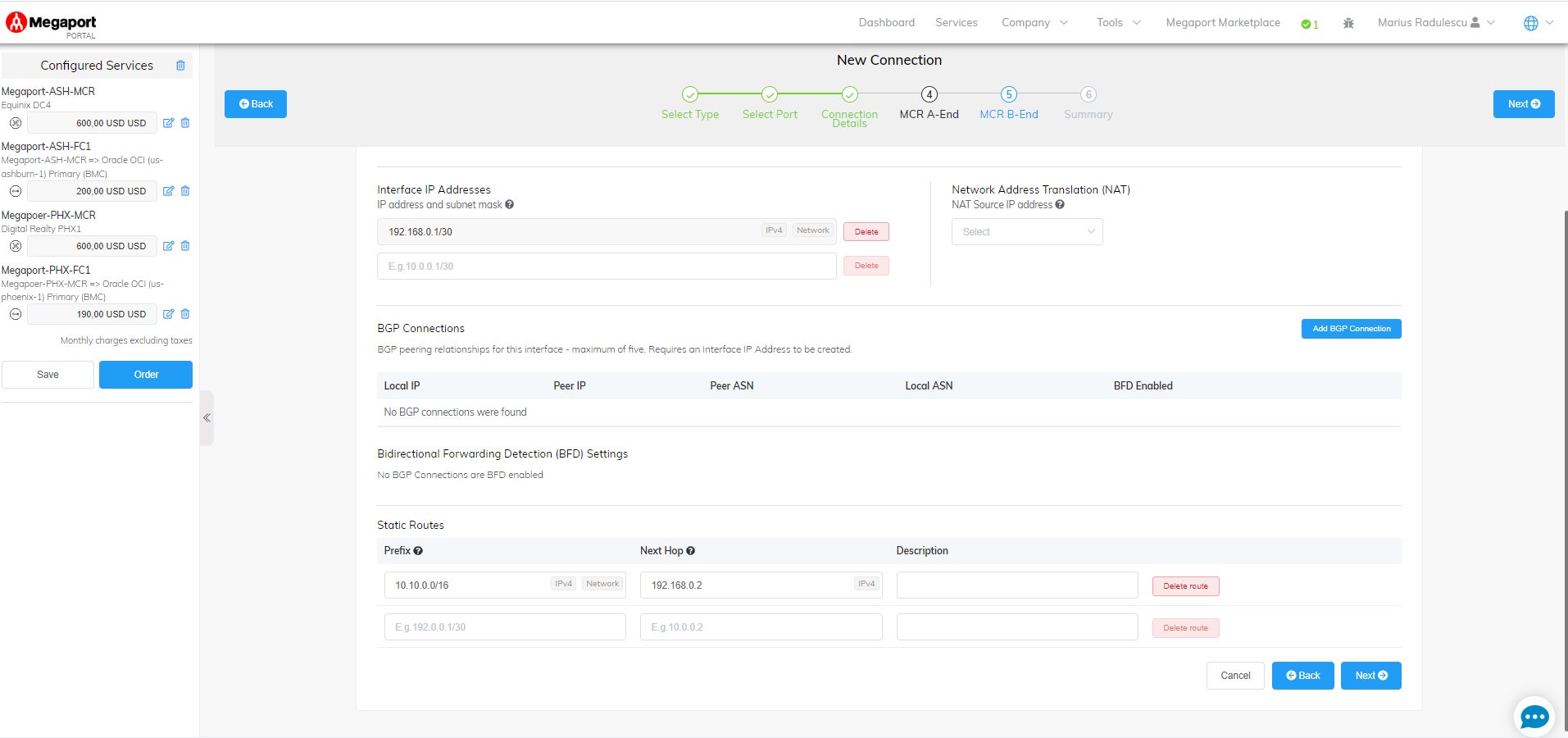
s. Now, it is time to configure the Ashburn side of this link. Provide Interface IP and create a static route to the other end as a next hop; in my case, I will add Phoenix VCN CIDR block. Click next.
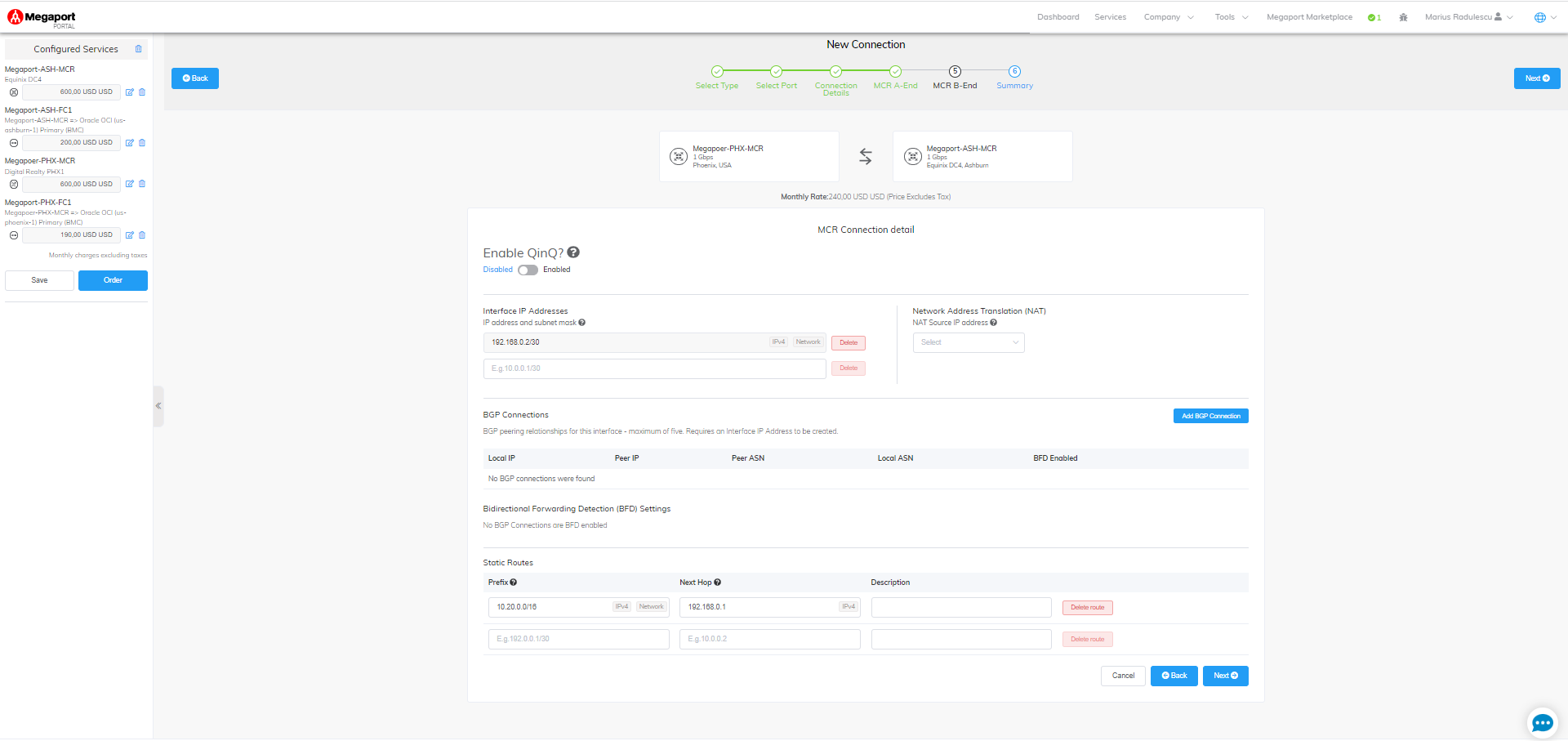
t. Verify Summary and click Add VXC.
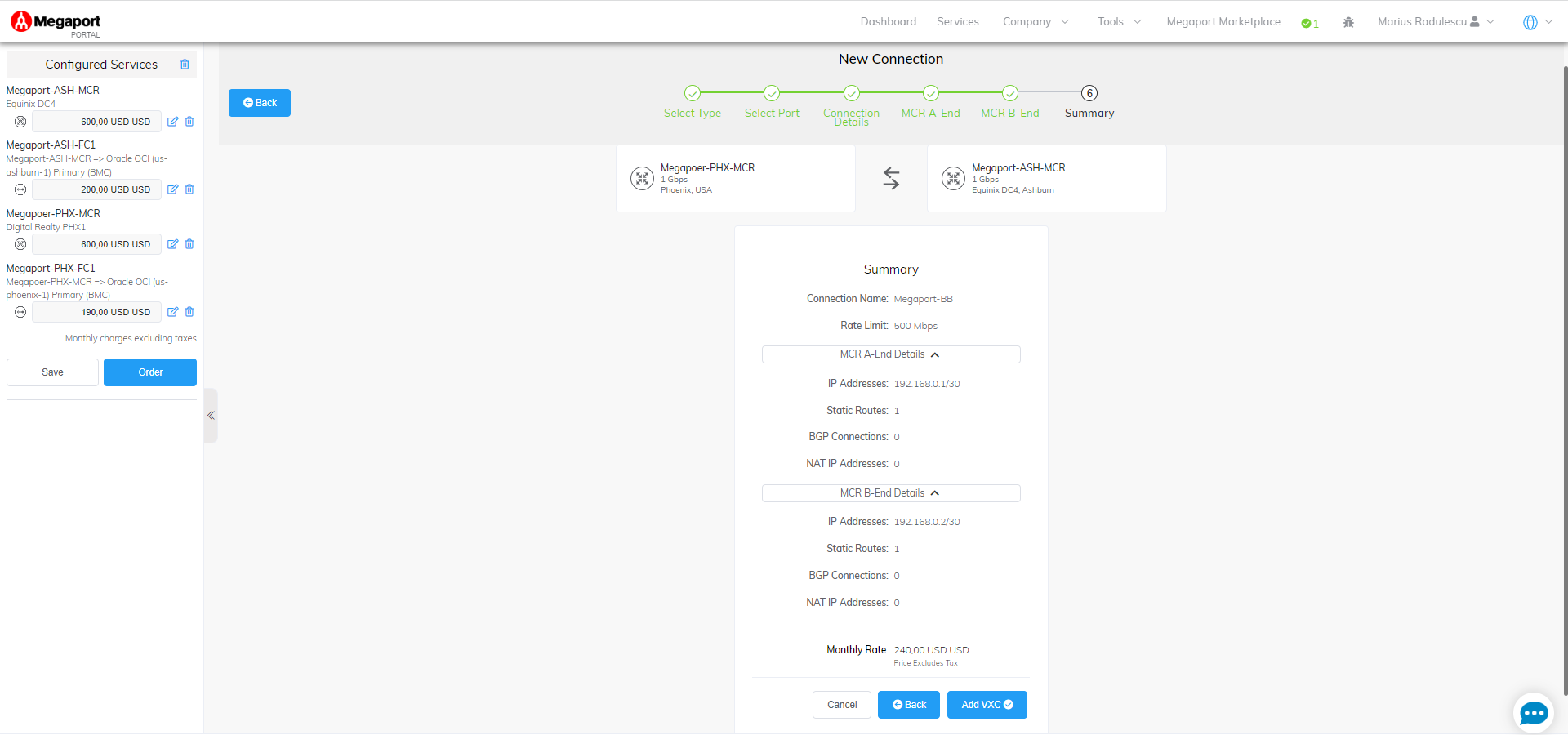
u. All that we have configured should look like the right portion of the below image, and so on the left, we should have what we need to order. Now is the time to click on Order.
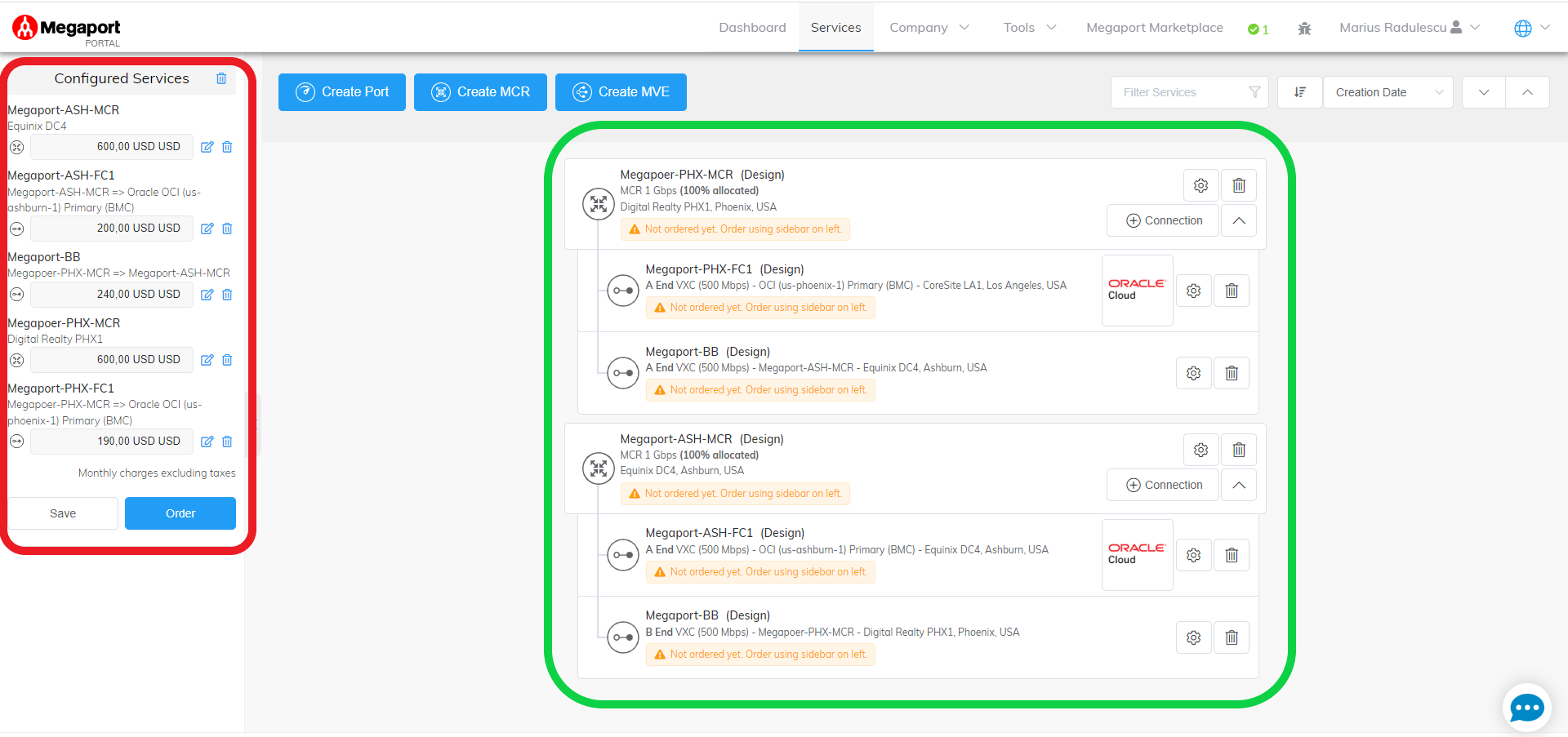
v. Check the summary and click Order Now.
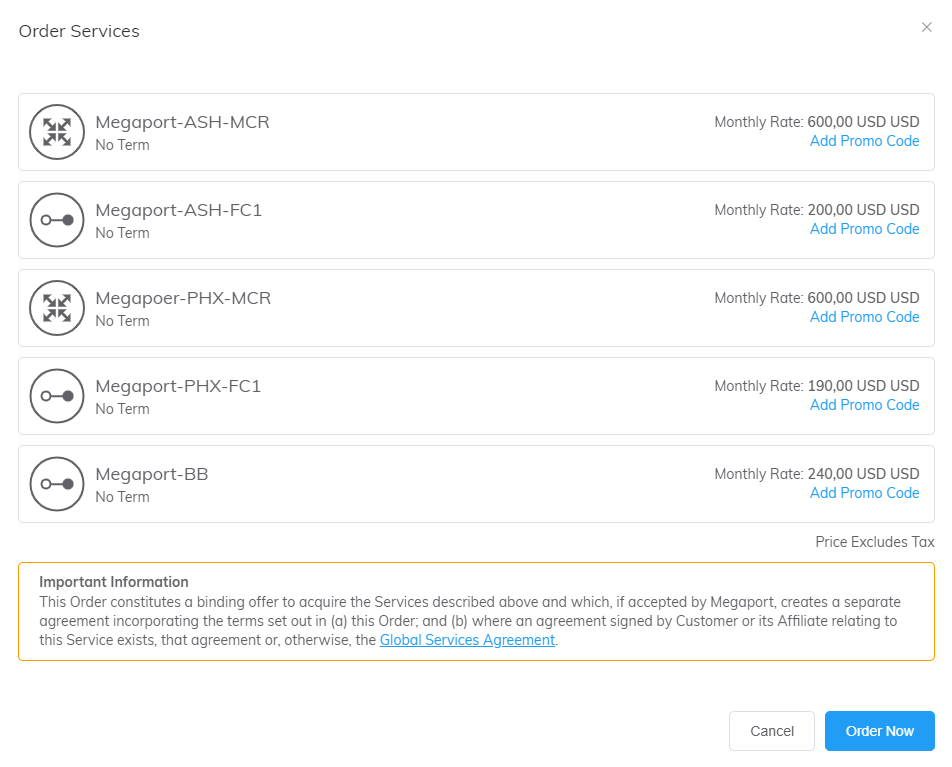
w. At this point, Megaport will deploy and configure everything we have created. It will take about 20 minutes.

x. Once it is completed, we will have something similar to the following image.
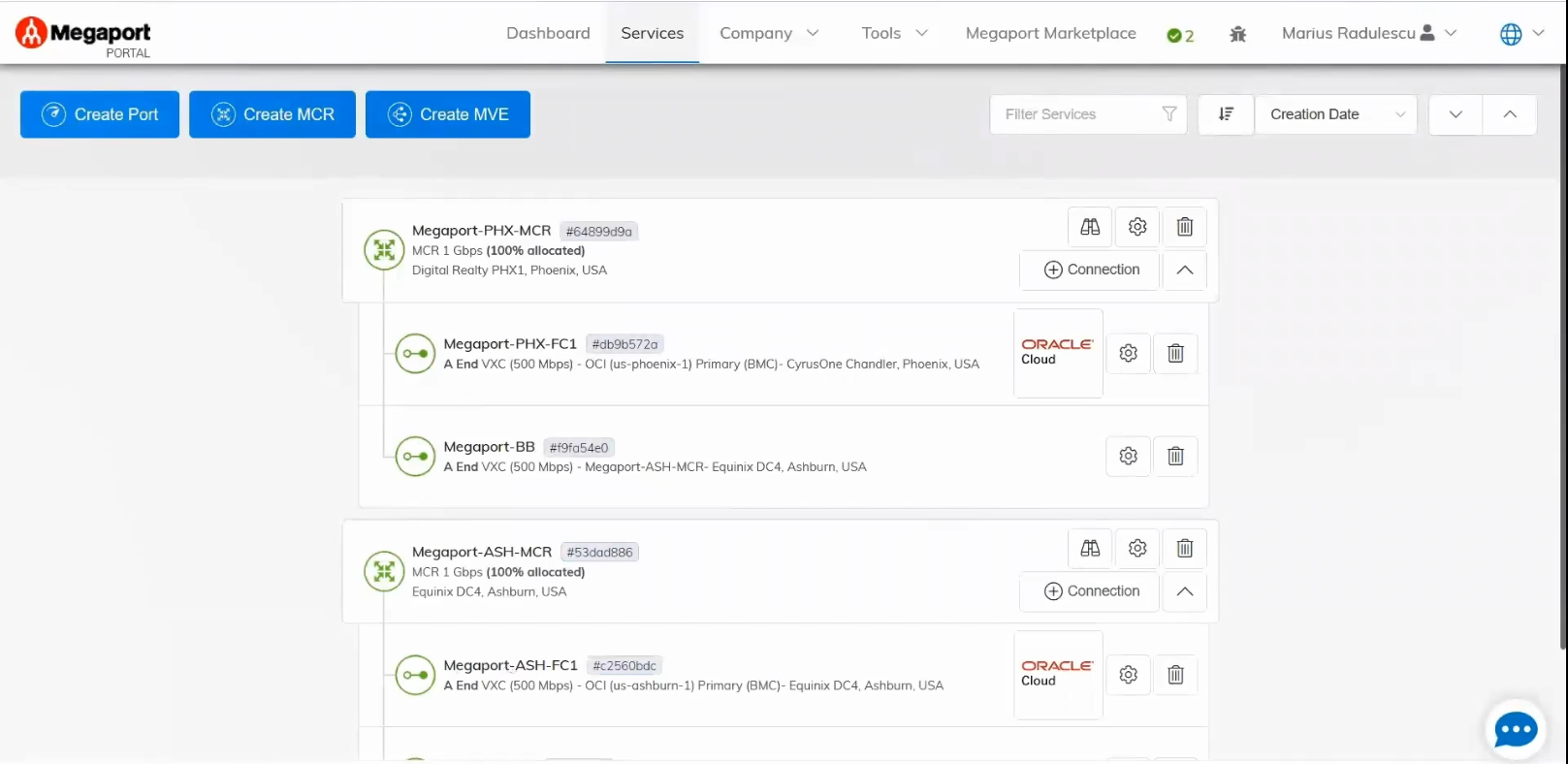
Validation
Once all configurations are done, let’s verify that OCI FastConnect BGP is up.
First in the Phoenix region

The Ashburn region

And now to an end-to-end connectivity test between the two OCI regions. On the test VMs, before the connectivity was done on the Megaport side, I used a tool called tracepath that failed. Now that the connectivity is established, the tracepath is working, and we can see the path being used between the two OCI regions.
